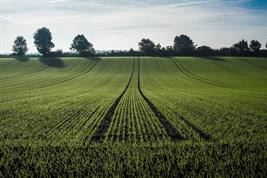22.03.2024

In a recent study, scientists from the Leibniz Centre for Agricultural Landscape Research (ZALF) and the University of Geisenheim have found that the use of amorphous silicon as a fertilizer in drought-stressed wheat fields has two major benefits: it increases soil moisture and promotes the development of beneficial microbial species. These findings offer new approaches to wheat production under climate change conditions and could lead to more effective farming practices.
The study showed that amorphous silicon (ASi) fertilization, especially at higher doses, can significantly increase soil moisture compared to untreated controls. This positive effect was already supported by other ZALF studies. What is new is that microbial organisms with potentially plant-enhancing activities accumulated in the rhizosphere, i.e. the immediate root environment. These results support the efficacy of ASi as a method to improve soil quality and promote a healthy microbiome, which is critical for plant health and yield.
Agricultural practice is facing increasing challenges due to rising water demand and environmental impacts from intensive use of pesticides and fertilizers. ASi fertilization is a potential measure to effectively address these challenges by helping to increase drought resilience and potentially promoting plant-promoting microbes in the soil. This approach could help optimize crop productivity. In the long term, this could reduce the use of conventional fertilizers and synthetic chemical pesticides while increasing the effectiveness of microbial biofertilizers. The results of this study form an important basis for the development of appropriate soil management strategies that meet the increasing conditions of climate change.
Funding:
This research was funded by the ZALF budget.
The text was created with the help of artificial intelligence and carefully reviewed and revised under the aspects of AI regulations at ZALF. The adoption of the text is at your own risk.
Further information:
